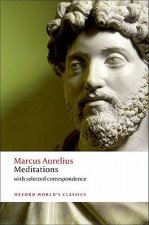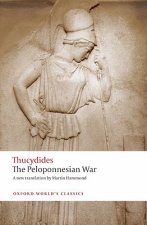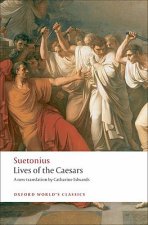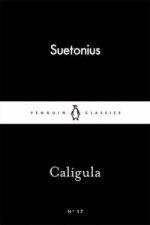
Kód: 04782523
Byzantine Art and Renaissance Europe
Autor Angeliki Lymberopoulou
Byzantine Art and Renaissance Europe discusses the cultural and artistic interaction between the Byzantine east and western Europe, from the sack of Constantinople by the Fourth Crusade in 1204 to the flourishing of post-Byzantine ... celý popis
- Jazyk:
 Angličtina
Angličtina - Vazba: Pevná
- Počet stran: 240
Nakladatelství: Taylor & Francis Ltd, 2013
- Více informací o knize

5564 Kč
Dostupnost:
50 % šance Máme informaci, že by titul mohl být dostupný. Na základě vaší objednávky se ho pokusíme do 6 týdnů zajistit.
Máme informaci, že by titul mohl být dostupný. Na základě vaší objednávky se ho pokusíme do 6 týdnů zajistit.Prohledáme celý svět
Mohlo by se vám také líbit
Dárkový poukaz: Radost zaručena
- Darujte poukaz v libovolné hodnotě a my se postaráme o zbytek.
- Poukaz se vztahuje na celou naši nabídku.
- Elektronický poukaz vytisknete z e-mailu a můžete ihned darovat.
- Platnost poukazu je 12 měsíců od data vystavení.
Informovat o naskladnění knihy
Zadejte do formuláře e-mailovou adresu a jakmile knihu naskladníme, zašleme vám o tom zprávu. Pohlídáme vše za vás.
Více informací o knize Byzantine Art and Renaissance Europe
Nákupem získáte 556 bodů
 Anotace knihy
Anotace knihy
Byzantine Art and Renaissance Europe discusses the cultural and artistic interaction between the Byzantine east and western Europe, from the sack of Constantinople by the Fourth Crusade in 1204 to the flourishing of post-Byzantine artistic workshops on Venetian Crete during the fifteenth and sixteenth centuries and the formation of icon collections in Renaissance Italy. The contributors examine the routes by which artistic interaction may have taken place, and explore the reception of Byzantine art in western Europe, analysing why artists and patrons were interested in ideas from the other side of the cultural and religious divide. In the first chapter, Lyn Rodley outlines the development of Byzantine art in the Palaiologan era and its relations with western culture. Hans Bloemsma then re-assesses the influence of Byzantine art on early Italian painting from the point of view of changing demands regarding religious images in Italy. In the first of two chapters on Venetian Crete, Angeliki Lymberopoulou evaluates the impact of the Venetian presence on the production of fresco decorations in regional Byzantine churches on the island. The next chapter, by Diana Newall, continues the exploration of Cretan art manufactured under the Venetians, shifting the focus to the bi-cultural society of the Cretan capital Candia and the rise of the post-Byzantine icon. Kim Woods then addresses the reception of Byzantine icons in western Europe in the late Middle Ages and their role as devotional objects in the Roman Catholic Church. Finally, Rembrandt Duits examines the status of Byzantine icons as collectors' items in early Renaissance Italy. The inventories of the Medici family and other collectors reveal an appreciation for icons among Italian patrons, which suggests that received notions of Renaissance tastes may be in need of revision. The book thus offers new perspectives and insights and re-positions late and post-Byzantine art in a broader European cultural context.
 Parametry knihy
Parametry knihy
Zařazení knihy Knihy v angličtině Humanities History History: earliest times to present day
5564 Kč
- Plný název: Byzantine Art and Renaissance Europe
- Autor: Angeliki Lymberopoulou
- Jazyk:
 Angličtina
Angličtina - Vazba: Pevná
- Počet stran: 240
- EAN: 9781409420385
- ISBN: 1409420388
- ID: 04782523
- Nakladatelství: Taylor & Francis Ltd
- Hmotnost: 658 g
- Rozměry: 234 × 155 × 19 mm
- Datum vydání: 21. March 2013
Oblíbené z jiného soudku
-

Histories
136 Kč -

On Tyranny
286 Kč -

King Leopold's Ghost
303 Kč -

Rise and Fall of Ancient Egypt
464 Kč -

Who Paid The Piper?
358 Kč -

Sumerian Mythology
601 Kč -

Yoga Body
457 Kč -

Pakistan: A Hard Country
462 Kč -

Bayeux Tapestry
643 Kč -

Complete Royal Families of Ancient Egypt
554 Kč -

FN FAL Battle Rifle
437 Kč -

From Third World to First
357 Kč -

Meditations
214 Kč -

Peloponnesian War
330 Kč -

Chernobyl Prayer
286 Kč -

Lives of the Caesars
288 Kč -

Making Medieval Manuscripts
454 Kč -

Oxford History of Poland-Lithuania
1709 Kč -

Guns, Germs, and Steel
296 Kč -

The Origins of Totalitarianism
286 Kč -

Illustrated Encyclopedia of Uniforms of World War I
543 Kč -

Postwar
462 Kč -

Tuesdays With Morrie
286 Kč -

Chickenhawk
303 Kč -

Underground
306 Kč -

Swerve
280 Kč -

Distant Mirror
357 Kč -

Complete Roman Army
543 Kč -

Age Of Capital
410 Kč -

Creation of Patriarchy
651 Kč -

Age Of Extremes
473 Kč -

John Skylitzes: A Synopsis of Byzantine History, 811-1057
972 Kč -

America's Secret Establishment
400 Kč -

Key of Solomon the King (Clavicula Salomonis)
279 Kč -

Travels of Ibn Battutah
303 Kč -

King's Two Bodies
679 Kč -

Caligula
90 Kč -

1913
303 Kč -

Armies of the Late Roman Empire AD 284 to 476
814 Kč -

Aquariums of Pyongyang
303 Kč -

Truman
488 Kč -

Anunnaki Homeworld
425 Kč -

Medusa
524 Kč -

History of the Ancient World
765 Kč -

Thank You for Being Late
358 Kč -

Infidel
286 Kč -

Your Money or Your Life - Economy & Religion in The Middle Ages
501 Kč -

24 Hours in Ancient Athens
282 Kč -

Cartoon History of the Universe III
550 Kč
Osobní odběr Praha, Brno a 12903 dalších
Copyright ©2008-24 nejlevnejsi-knihy.cz Všechna práva vyhrazenaSoukromíCookies







 Vrácení do měsíce
Vrácení do měsíce 571 999 099 (8-15.30h)
571 999 099 (8-15.30h)